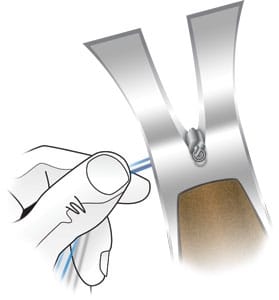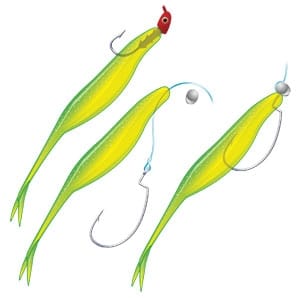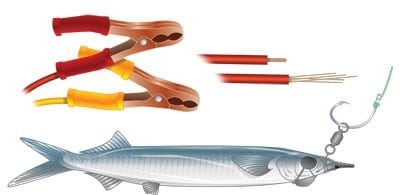
Drop The Hammer
In recent years, the size and diameter of swivels and line (especially braid) has become smaller and smaller. Now it’s to the point where I’m having trouble getting purchase on the swivels to tighten knots adequately, and I’m sure that I’m not the only angler in this boat. My solution is to use a claw hammer as a “third hand.” Insert the swivel into the gap between the hammer claws, with the line on the outside of the claws. The claw of the hammer has a tapered gap, which allows almost any size swivel to be inserted. The beveled edge of the claw’s gap also provides a solid seat for the swivel body as you pull the knot tight. This arrangement works for almost any size swivel, light to heavy, and provides a mechanical advantage that makes knot tying a breeze.
Lee Dantzler
Havelock, North Carolina
Weigh Master

Most anglers know that a lead-head jig used with a soft plastic bait is a deadly combination. However, sometimes the lead ends up being a little too heavy or a little too light for certain fishing scenarios. One effective method to quickly customize the weight of your offering to match the conditions you are fishing is to replace the lead-head jig with an R-type worm hook and a separate, removable split shot in front of the soft plastic bait. This allows you to instantly fine tune your bait without wasting time retying. As a bonus, the removable split shot has protruding “ears,” which give the bait a slightly different swimming action on the retrieve. Plus, the whole rig is weedless thanks to the shrouded R hook. Try it, and I think you’ll find yourself catching more fish.
Bill Hull
Houston, Texas
Saving Cable

If you fish offshore and want an inexpensive way to stockpile rigging wire, this tip will certainly help you out. When it was time to replace my jumper cables, I didn’t want to just throw them away – after all, we are all trying to be green. From the faulty set of jumper cables, I removed the clamps, then split the cables apart and cut them to an appropriate length. By trimming an inch of the insulation off one end, I can use pliers to pull out individual strands of wire while keeping the rest nice, neat and secure. Now I can make the rigging wires as long as I want, plus they are stiffer and heavier gauge than most copper wire found in tackle stores.
Capt. Bob Frevert
Jupiter, Florida









